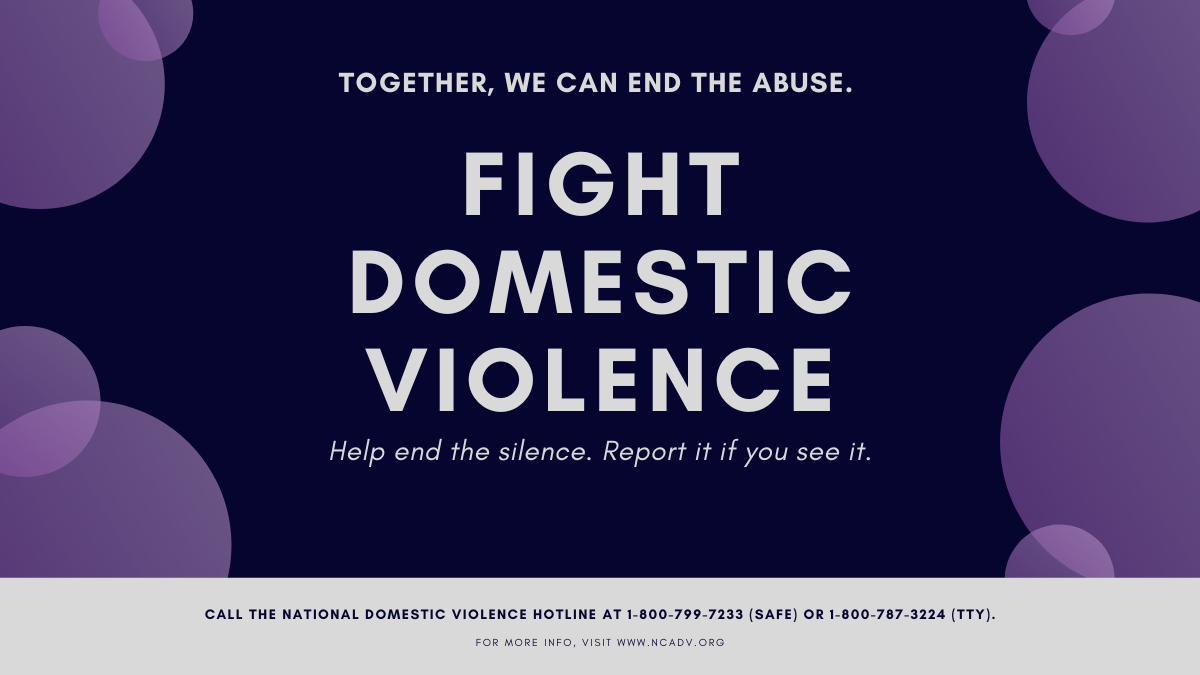Written By: Jeannette Carrington
Graphic By: Jeannette Carrington
jcarrington@lc.edu
Domestic Violence Awareness Month began in October 1987. It brings together people working on domestic violence issues. It also raises awareness for those issues.
The United States Department of Justice Office on Violence Against Women (OVW) states that “domestic violence is a pattern of abusive behavior in any relationship that is used by one partner to gain or maintain power and control over another intimate partner. Domestic violence can be physical, sexual, emotional, economic, psychological, or technological actions or threats of actions, or other patterns of coercive behavior that influence another person within an intimate partner relationship. This includes any behaviors that intimidate, manipulate, humiliate, isolate, frighten, terrorize, coerce, threaten, blame, hurt, injure, or wound someone.”1
The Merriam-Webster dictionary simply defines it as “violent or abusive behavior directed by one family or household member against another.”
Here are some statistics about domestic violence in Illinois.2
- 41.5% of Illinois women and 25.9% of Illinois men experience intimate partner physical violence, intimate partner sexual violence, and/or intimate partner stalking in their lifetimes.
- In 2014, almost 65,800 intimate violence incidents were reported to Illinois law enforcement. Many others went unreported.
- Between July 2013 and June 2014, there were 84 domestic violence-related deaths in Illinois, including 15 children.
- In 2017, there were 47 reported adult domestic violence homicide victims
- 40% of reported adult domestic violence homicides were committed with firearms.
- As of December 31, 2019, Illinois had submitted 3,565 domestic violence misdemeanor and 434 active protective order records to the NICS Index.
Anyone can be an abuser. They are from a wide range of groups, cultures, religions, economic levels, genders, ages, and backgrounds. Abusers can be your boss, coworker, neighbor, or friend. Abusers can be your teacher, relative, pastor, or politician. The clerk at the store, your garbage man, or your hair stylist can also be abusers. The list goes on and on.
One thing that most abusers have in common is that they are only violent with their current or former intimate partners. They are usually law-abiding outside of their home and usually do not have criminal records.
You cannot look at someone and know that they are an abuser by how they look or their personality. Yet they often display common characteristics.3
- Extreme jealousy
- Possessiveness
- Unpredictability
- A bad temper
- Cruelty to animals
- Verbal abuse
- Extremely controlling behavior
- Antiquated beliefs about the roles of women and men in relationships
- Forced sex or disregard for their partner’s unwillingness to have sex
- Sabotage of birth control methods or refusal to honor agreed-upon methods
- Blaming the victim for anything bad that happens
- Sabotage or obstruction of the victim’s ability to work, attend school, visit friends or family, or go anywhere
- Controls all the finances
- Abuse of other family members, children, or pets
- Accusations of the victim flirting with others or having an affair
- Control of what the victim wears and how they act
- Demeaning the victim either privately or publicly
- Embarrassment or humiliation of the victim in front of others
- Harassment of the victim at work
Anyone can be a victim of domestic violence and are from all groups, cultures, religions, economic levels, genders, ages, and backgrounds. They can also be your boss, coworker, neighbor, friend, teacher, relative, pastor, politician, the clerk at the store, your garbage man, or your hairstylist. The list also goes on and on.
Victims do not cause domestic violence themselves. They are not always timid or lacking in self-confidence. They do not always return the abuse to the abuser. There is always an imbalance of power and control in the relationship. The abuser feels entitled to power and control over their partner and uses abuse to gain and maintain that control. There is always one person who is the primary, constant source of power, control, and abuse in the relationship. This is true even if the victim fights back or instigates violence to diffuse the situation.
Domestic violence not only affects the victims, but also affects family members, friends, co-workers, and others. Domestic violence has a tremendous impact on children who grow up witnessing it.
There are countless reasons why victims stay with their abuser. The victim may fear that the abuser will become more violent or that they may lose their life. The victim may lack knowledge or access to safety and support. They may fear losing custody of their children or that they may be killed. They may have no way to support themselves and/or their children if they leave or have the finances to leave.
If you or someone you know is in an abusive relationship, please reach out to your family, close friend, pastor, therapist/counselor, or other trusted person for help. Share tools and resources with your network to prevent domestic abuse and support those who are experiencing it.
For anonymous, confidential help available 24/7, call the National Domestic Violence Hotline at 1-800-799-7233 (SAFE) or 1-800-787-3224 (TTY) now.
You are not alone!
Visit the National Coalition Against Domestic Violence’s website at www.ncadv.org for more fact sheets, membership information, and valuable resources.
- https://www.justice.gov/ovw/domestic-violence
- National Coalition Against Domestic Violence (2020). Domestic violence in Illinois. Retrieved from www.ncadv.org./files/Illinois.pdf.
- https://ncadv.org/signs-of-abuse




